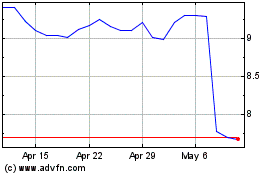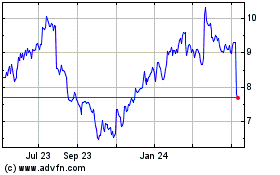Alight’s 2023 International Workforce and Wellbeing Mindset
Study finds employee wellbeing has stagnated, with only half of
workers feeling positive across their mental, physical and
financial wellbeing
Financial pressures and extensive layoffs have created an
atmosphere of uncertainty, resulting in employees to feel less in
control of their wellbeing. In addition, employees have lost trust
in their employers' wellbeing efforts, according to findings from
the 2023 Alight International Workforce and Wellbeing Mindset
Study.
The study reveals employee wellbeing has remained relatively
stagnant over the past year, with only half (51%) of the workforce
reporting positive feelings across their mental, physical and
financial wellbeing in 2023, compared to 53% of employees in 2022.
Notably, less than half of employees (41%) believe their employer
cares about their wellbeing — a six-percentage point decline
year-over-year— and just 56% of employees say they feel in control
of their wellbeing.
“Maximizing the effectiveness of wellbeing programs requires
that organizations consider critical moments that impact employees'
mental, physical and financial health,” said Alison Borland, chief
wellbeing officer, Alight. “By addressing all facets of wellbeing
through integrated, personalized HR and benefit programs,
organizations can eliminate complexities and empower workers to
better engage with available resources.”
Mental wellbeing
The study shows three-quarters of U.S. employees report they are
experiencing moderate to high stress levels, rising to 80% among
Gen Z and Millennial workers. Personal finances (56%), job
challenges (52%) and physical health (32%) rank as the top three
sources of stress, while 29% of employees say their mental health
has declined due to the current economic environment.
Meanwhile, 75% of workers report experiencing some adverse
effect of job-related stress, with sleep disruption (53%), low
morale (43%) and anxiety attacks (37%) having the biggest impacts.
Nearly one-third (30%) of workers believe their job negatively
impacts their mental health.
Financial wellbeing
Thirty-one percent of workers report feeling financial stress
and often have no money left over at the end of the month. This is
despite taking actions such as reducing their spending, which more
than two-thirds (67%) have done. Additionally, nearly half (49%) of
employees are concerned the money they have won’t last, 46% feel
their finances control their life and 39% fear they will never have
the life they desire due to their finances.
Physical wellbeing
When U.S. employees need to see a doctor, many cannot access
one. Almost half (47%) say they have been unable to receive
services like doctor visits, lab work, urgent care, specialist care
or surgeries when required.
Of those that did not or could not seek healthcare, 41%
attribute it to costs, 23% were unsure where to go and 23% faced
long wait times. Plus, 38% say they had problems trusting their
doctor, often due to a lack of time spent with them.
In terms of employee benefits, 71% are enrolled in an employer
health plan, with the rest evenly divided between a
spouse/partner’s plan, a private health plan or no plan at all.
However, only 62% say they know where to go to get information on
picking the right plan, and 44% regret a healthcare decision
because they took bad advice, jumped into treatment, did not check
costs or neglected to see if a provider was in-network.
How employers can reignite engagement
Nearly one-third (32%) of employees report they do not use the
benefits available to them. The top reasons include not having
enough time to evaluate the offerings, overly complex access or
benefits that simply do not meet their family’s needs.
Employers can strengthen engagement and value by tailoring HR
tools, benefit programs and communication to the needs of their
employees. For example, 85% of employees agree that a
‘one-stop-shop,’ such as a mobile app, would prove useful in terms
of making better health and financial decisions, utilizing personal
recommendations and accessing varied vendors and partners.
“It is crucial for employers to prioritize initiatives that
facilitate easy access to relevant and effective resources to
engage their employees around their wellbeing,” said Laine Thomas
Conway, vice president, engagement services strategy and thought
leader at Alight. “Part of their role is to help employees use
their benefits effectively, especially when they are needed in
those moments that matter. It’s also about showing that the company
genuinely cares about their employees and telling an authentic
story about that commitment.“
About the report
In its 13th year, the 2023 International Workforce and Wellbeing
Mindset Study, examines employee perceptions around wellbeing,
culture, total rewards and workplace technology to help employers
optimize their employees' experiences to improve wellbeing,
engagement, productivity and performance.
Between March and April 2023, responses were collected from over
2,000 U.S. employees working full- or part-time at employers with
at least 1,000 employees. The employee sample is representative of
a range of age groups, along with race, gender and sexual
orientation.
About Alight Solutions
Alight is a leading cloud-based human capital technology and
services provider that powers confident health, wealth and
wellbeing decisions for 36 million people and dependents. Our
Alight Worklife® platform combines data and analytics with a
simple, seamless user experience. Supported by our global delivery
capabilities, Alight Worklife is transforming the employee
experience for people around the world. With personalized,
data-driven health, wealth, pay and wellbeing insights, Alight
brings people the security of better outcomes and peace of mind
throughout life’s big moments and most important decisions. Learn
how Alight unlocks growth for organizations of all sizes at
alight.com.
Forward-Looking Statements
This press release contains forward-looking statements within
the meaning of Section 27A of the Securities Act of 1933, as
amended (the “Securities Act”), and Section 21E of the Securities
Exchange Act of 1934, as amended. These statements include, but are
not limited to, statements related to the expectations regarding
the performance and outlook for Alight’s business, financial
results, liquidity and capital resources, and other non-historical
statements, including statements with respect to potential benefits
of Alight’s offerings to its clients and recipients of its
services. In some cases, these forward-looking statements can be
identified by the use of words such as “outlook,” “believes,”
“expects,” “potential,” “continues,” “may,” “will,” “should,”
“could,” “seeks,” “projects,” “predicts,” “intends,” “plans,”
“estimates,” “anticipates” or the negative version of these words
or other comparable words. Such forward-looking statements are
subject to various risks and uncertainties including, among others,
those described in the forward-looking statements can be found
under the section entitled “Risk Factors” of Alight’s Annual Report
on Form 10-K, filed with the Securities and Exchange Commission
(the "SEC") on March 1, 2023, as such factors may be updated from
time to time in Alight's filings with the SEC, which are, or will
be, accessible on the SEC's website at www.sec.gov. Accordingly,
there are or will be important factors that could cause actual
outcomes or results to differ materially from those indicated in
these statements. These factors should not be construed as
exhaustive and should be considered along with other factors noted
in this presentation and in Alight’s filings with the SEC. Alight
undertakes no obligation to publicly update or review any
forward-looking statement, whether as a result of new information,
future developments or otherwise, except as required by law.
View source
version on businesswire.com: https://www.businesswire.com/news/home/20230919731145/en/
Mariana Fischbach mariana.fischbach@alight.com
Alight (NYSE:ALIT)
Historical Stock Chart
From Mar 2024 to Apr 2024

Alight (NYSE:ALIT)
Historical Stock Chart
From Apr 2023 to Apr 2024
